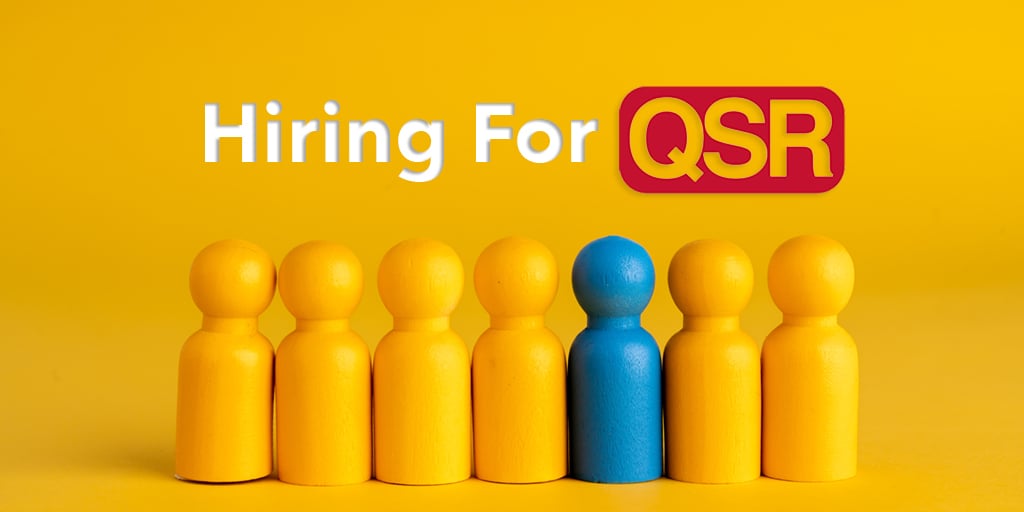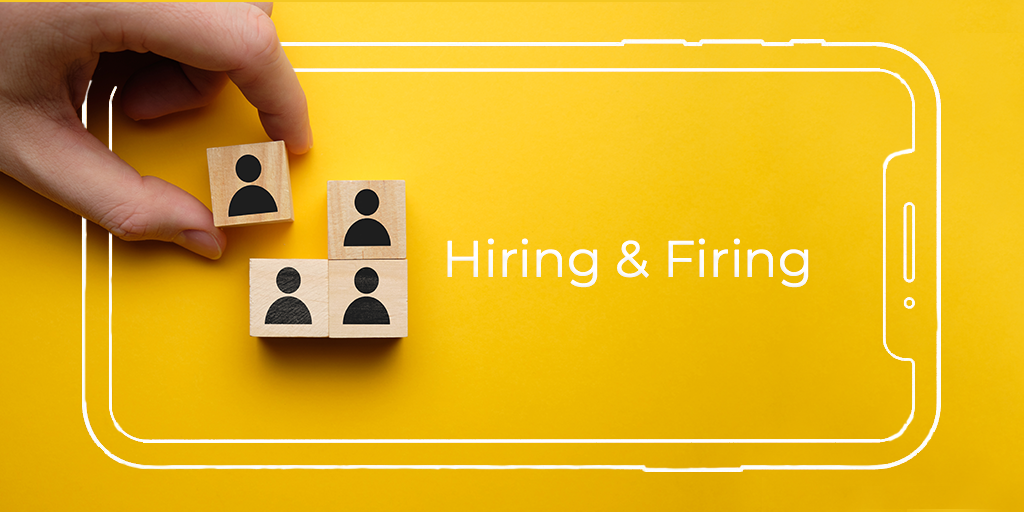With the demand for fast food picking up again as the U.S. economy recovers, many QSRs are scrambling to hire new candidates by offering extended welfare benefits, extensive hiring events, and even parking lot interviews. Job openings have risen to a two-year high, with at least 104,000 openings in the accommodation and food services sector.
However, QSRs are facing a challenge as they are unable to hire sufficient workers to meet the rising demands - despite the rise in job opportunities, the number of candidates remains low. Attractive stimulus checks and unemployment benefits, coupled with the fear of being infected with Covid-19, are keeping potential applicants at home instead of looking for work. To make matters worse, QSRs are not competing for new hires not only within the industry but with many others as hiring is picking up.
Apart from looking at how your QSR can hire creatively, there is also value in understanding what QSR employees value, so as to retain your current hires, while simultaneously reaching out to potential candidates more effectively with attractive offers. Here are some insights as to what QSR employees are currently looking out for, to determine if they should stay at their current job.
A Safe Environment
With the ongoing Covid-19 pandemic, safety has become a priority and workers are not willing to put their lives at risk, especially when they have to interact with many customers or co-workers at close proximity for a large part of the day.
Reassure current employees (and potential candidates) by enforcing donning of masks, safe distancing measures, enhanced cleaning, and even providing personal protective equipment for staff if necessary. These standards should not be limited to the employees of your QSR, but also to customers, who should follow appropriate safety precautions or should otherwise not be allowed into the restaurant.
Ensure that these safety measures are strictly enforced, to give employees peace of mind as they work, knowing that the precautions have been taken to create a safer working environment.
Training and Recognition in the Workplace
Workplace training is crucial in boosting job satisfaction, career progression, and retention. However, studies conducted by YOOBIC have shown that 40% of the frontline workers surveyed are only trained once a year or less, which results in them feeling undervalued and insufficiently trained.

58% also believe that the most important thing about training is that it is fun and engaging.
.png?width=1402&name=_Hiring%20and%20Firing%20Infographic%20(1).png)
Successful training helps improve the morale of workers, provides them with more information, and is ultimately a win-win scenario for both employees and your QSR.
Consider incorporating mobile training, since most people are accessing information through their mobile devices. By making it convenient for them to access information, your employees are also likely to engage with training content more actively. Send handbooks, checklists, and training videos via a text message link, which can be sent to new hires and existing employees. These could include new guides on safer Covid-19 measures, and how they can do their part to help create a safer work environment. SMS reminders can also be sent, to guarantee completion, and hiring managers can easily review completion rates.
This point is also in line with another finding from YOOBIC's survey, where 70% of frontline workers think app-based training would be easier. 76% of employees would also feel more connected if they could access company communications on a mobile device. Therefore, mobile training would not only familiarize your employees with onboarding and training processes but will also empower them.
Digitazation and Adaptation
As Millennials and Gen Zs enter the workforce, they come with a different set of learning styles and experiences. However, YOOBIC's survey has also shown that millennial frontline workers are the most dissatisfied. This is due to a misalignment between their expectations and what organizations have been doing - one particular example stated that training wasn't adapted to Tomlinson's largely Gen Z and Millennial workforce, since it was done in-person with paper or pdf materials.
Consider adaptations such as paperless onboarding, which not only saves time in onboarding and paperwork but also meets in the middle with expectations of Millennials and Gen Zs. All paperwork will also be easily retrievable and can be conveniently stored with electronic signatures, saving employees time from heading down to the physical store just to submit their signed contracts.
Additionally, automated scheduling will also convenience interview candidates, as they get a text message link to your Google calendar to schedule a zoom, based on pre-set availability. This saves time on back and forth communication, and reminders sent also reduce ghosting, making the entire interview process efficient and seamless.
By adopting greater digitalization in your processes, recruiting can be made much simpler and seamless, while saving time and providing greater convenience to employees.
Higher Wages and Tips
Based on a report by One Fair Wage, 76% of those surveyed are planning to leave their jobs due to low wages and tips.
.png?width=1402&name=_Hiring%20and%20Firing%20Infographic%20(2).png) Restaurants reopening at reduced capacity would result in lower tips, and fewer workers are willing to put their health at risk, and would rather live on unemployment benefits. This is why many restaurants, such as Chipotle, are now offering competitive wages and attractive benefits, including education and bonuses.
Restaurants reopening at reduced capacity would result in lower tips, and fewer workers are willing to put their health at risk, and would rather live on unemployment benefits. This is why many restaurants, such as Chipotle, are now offering competitive wages and attractive benefits, including education and bonuses.
Monitor the wages and benefits paid out by competitors, especially in comparison to the minimum wage, to determine if your current salaries are attractive to potential candidates. The wages and additional benefits will also have to be perceived to outweigh unemployment benefits and stimulus checks, for these candidates to be willing to apply for the job.
A Simplified and Streamlined Application Process
Successfully attracting the interest of a potential candidate is half the battle won, but whether they fully complete the application form is highly dependent on the application process. If candidates had to choose between a 5-minute form to a 30-40 minute one, their final choice would be obvious.
By having a simple, streamlined application form, candidates are more likely to go through with submitting the form. Make it easy for potential applicants by stripping your application form to the bare essentials. Avoid asking duplicate questions, or asking for excessive information that may not be necessary, and leave them to the interview stage. Alternatively, consider ways to make the process more interactive. This could be in the form of gamification, personality tests, or even video resumes. By making the process different, and even fun, applicants are more likely to stay on and finally complete the application form.
Utilizing automated scoring systems in application forms can also help shorten turnarounds, allowing candidates to find out if they've made it to the next round as soon as possible. This reduces instances where candidates accept another job offer even before you've informed them that they qualify for the next round, or have been offered a job at your QSR.
To Wrap Up
By understanding the perspectives of what employees and potential applicants want from a QSR job, you will be able to cater to their needs and retain them, while simultaneously attracting new candidates. Take time to build interpersonal communication with your employees and determine what matters to them, and provide support whenever possible. A little effort goes a long way, and who knows, these past and current employees may also be the key to more applicants through referrals and positive word of mouth.
Want to find out more about which tools you can use to meet the needs of your employees? We're more than happy to provide personalized insights - schedule a chat with us now.





